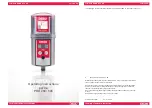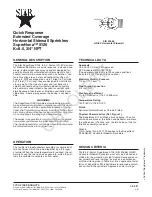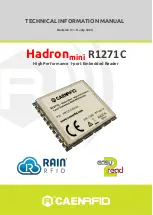
Index
© National Instruments Corporation
Index-5
AT-MIO-16 User Manual
N
NI-DAQ driver software, 1-3 to 1-4
interface with programming
languages, 1-4
relationship between programming
environment, NI-DAQ, and
hardware (illustration), 1-4
noise, minimizing, 3-25 to 3-26
nonreferenced single-ended (NRSE) input
configuration, 2-10
definition, 2-10
single-ended connections for grounded
signal sources, 3-11
NRSE input. See nonreferenced single-
ended (NRSE) input.
O
OUT, GATE, and SOURCE timing signals,
3-19 to 3-25
OUT1 signal, 3-4, 3-16
OUT2 signal, 3-4, 3-16, 3-21
OUT3 signal, 3-21
OUT4 signal, 3-21
OUT5 signal, 3-4, 3-16
output polarity, configuring. See polarity
configuration.
P
physical specifications, A-5
pin assignments for I/O connector, 3-2
polarity calibration procedure
bipolar input, 4-4 to 4-5
bipolar output, 4-7 to 4-8
unipolar input, 4-5 to 4-6
unipolar output, 4-8 to 4-9
polarity configuration
input polarity and input range, 2-10
to 2-11
actual range and precision vs. range
selection and gain (table), 2-12
considerations for selecting, 2-11
to 2-12
jumper settings (table), 2-11
output polarity, 2-14
jumper settings (table), 2-15
output range and precision
(table), 2-15
power connections, 3-16
power requirement specifications, A-5
programming, register-level, 1-5. See also
software for AT-MIO-16 board.
pulse-width measurement, 3-22
pulses, producing, 3-21
R
referenced single-ended (RSE) input
configuration, 2-9 to 2-10
definition, 2-9
single-ended connections for floating
signal sources, 3-10
register-level programming, 1-5
RSE input. See referenced single-ended
(RSE) input.
RTSI bus
clock selection, 2-17
definition, 1-1
signal connections, 3-15 to 3-16
block diagram, 3-15
RTSI switch, 3-16
S
SCANCLK signal
data acquisition timing connections, 3-16
description, 3-3
general-purpose timing, 3-21
SCXI systems, 1-1
signal connections
analog input signal connections, 3-4
to 3-6
instrumentation amplifier, 3-5 to 3-6
warning against exceeding input
ranges, 3-5
analog output signal connections, 3-12
to 3-13
cabling considerations, 3-26 to 3-27
digital I/O signal connections, 3-13
to 3-15
field wiring considerations, 3-25 to 3-26
floating signal sources, 3-6



































